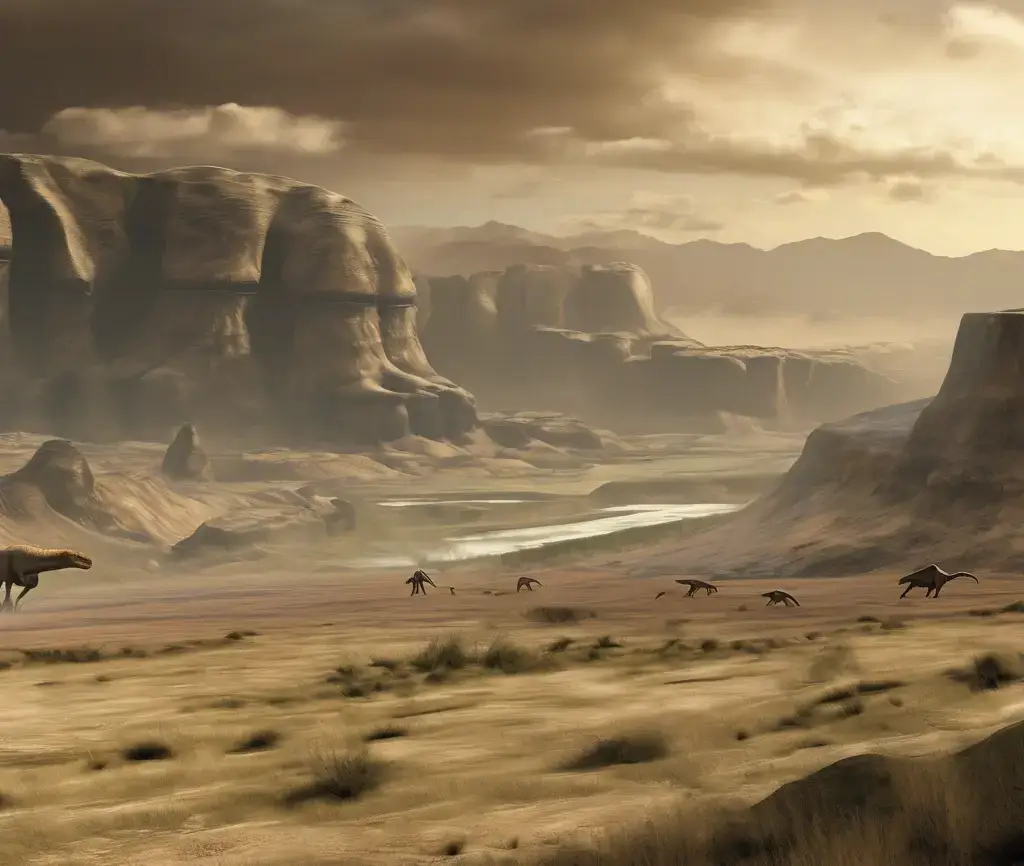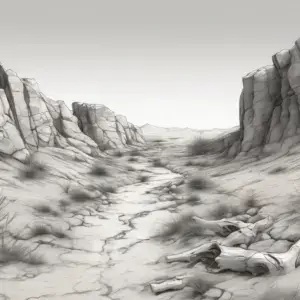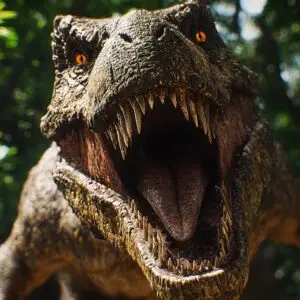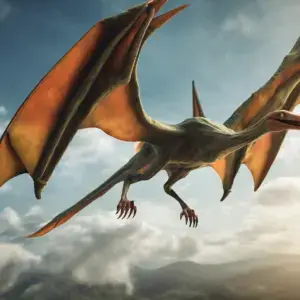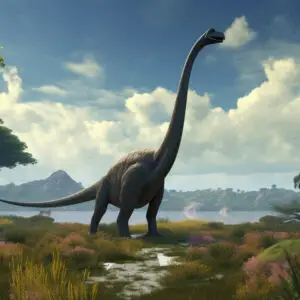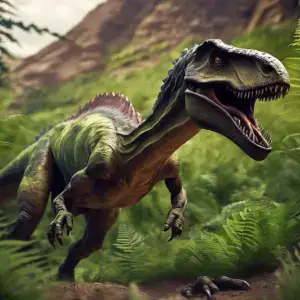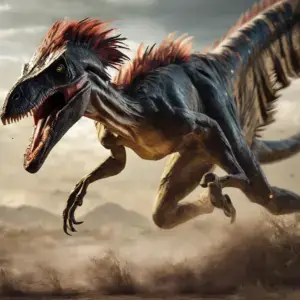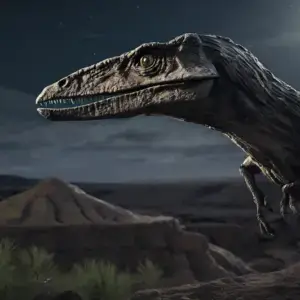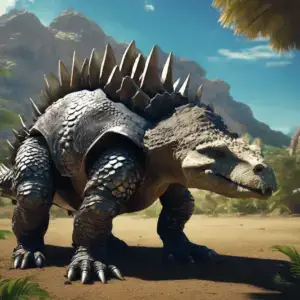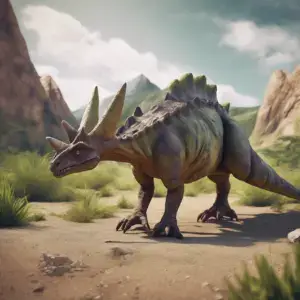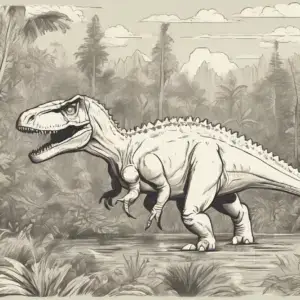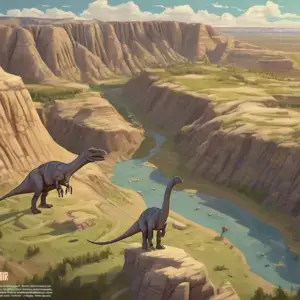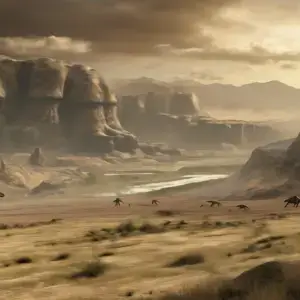Triceratops: The Horned Giant That Faced T. Rex
AJ
Your Blog Name
Learn about Triceratops’ epic horns, shield, and T. Rex battles in this exciting look at a prehistoric icon.
Imagine a dinosaur built like a tank with a face full of horns, ready to stare down the fiercest predator of its day. That’s Triceratops, the three-horned titan that roamed North America 66 million years ago, a Cretaceous legend that didn’t back down from T. Rex. With a massive frill and a body that screamed “try me,” it was a plant-eater with a fighter’s heart, a horned hero in a world on the brink. Let’s charge into the Late Cretaceous and unpack the epic tale of Triceratops, the dino that turned defense into a deadly art.
Horns That Meant Business
A Triple Threat
Triceratops didn’t mess around—its face sported three horns that made it a walking arsenal. Two brow horns stretched 3 to 4 feet long above its eyes, sharp enough to gore anything dumb enough to charge. A smaller nose horn, about a foot long, topped its snout, a bonus jab in close quarters. Fossils from Montana’s Hell Creek Formation show these horns weren’t decorative—they bear scratches and breaks from real fights. At 30 feet long and 6 to 12 tons, it was a rhino on steroids, those horns ready to rumble in the Cretaceous wilds.
Fight or Flirt?
Were those horns just for battle? Maybe not. Scientists think they doubled as showpieces—males might’ve locked horns to impress mates or settle scores, like deer with antlers. Fossils show healed punctures, hinting at sparring matches that didn’t end in death. But when T. Rex came sniffing, those horns turned lethal—bite marks on predator skulls match Triceratops’ jabs. It was a mix of swagger and survival, a horned crown that served love and war in equal measure.
The Frill Factor
A Shield with Style
That neck frill wasn’t just a backdrop—it was a bony shield, stretching 6 feet wide and edged with knobs or spikes called epoccipitals. Made of solid bone at the base, it flared out to protect its neck from T. Rex bites, a vital spot for any predator to hit. Fossils show bite scars that stop at the frill—proof it worked. Picture it rearing up, frill fanned out, turning its head into a fortress. Some think it flushed with color, a flashy warning or mate magnet, blending defense with a dash of Cretaceous dazzle.
More Than Armor
The frill wasn’t all about fighting—it might’ve been a radiator too. Blood vessels crisscrossed it, suggesting it dumped heat on scorching days, keeping Triceratops cool under pressure. Fossils from Wyoming show frills growing bigger with age, maybe signaling maturity to the herd. It anchored massive jaw muscles too, powering a bite that sheared through tough plants. This was a multi-tasker—shield, sign, and thermostat rolled into one bony masterpiece.
A Plant-Eating Powerhouse
Beak and Teeth Combo
Triceratops didn’t hunt—it grazed, wielding a sharp, horny beak to snip shrubs and ferns. Behind that beak sat dental batteries—hundreds of teeth stacked in rows, constantly replacing as they wore down. Fossils show up to 800 teeth in some jaws, slicing greens like a prehistoric paper shredder. It chowed through low plants—cycads, palms, whatever grew in the Hell Creek swamps—eating 200 pounds a day to fuel its bulk. Picture it cropping bushes, beak snapping, a lawnmower with horns.
Gut of Steel
No chewing marathon here—Triceratops swallowed fast, letting its gut do the heavy lifting. A barrel-shaped belly fermented that plant matter, breaking it down with microbes over hours. Fossils hint at a digestive tract like a cow’s, slow and steady, extracting every bit of energy. It didn’t need stones like sauropods—those teeth did enough upfront work. It was a walking compost heap, turning Cretaceous scrub into muscle and might.
Life in T. Rex’s Shadow
Showdowns with the King
Triceratops lived nose-to-nose with T. Rex, a matchup straight out of a dino blockbuster. Fossils tell wild tales—Triceratops skulls with T. Rex bite marks, some healed, proving it survived clashes. One specimen shows a horn snapped off, regrown crooked—battle damage from a predator’s lunge. Picture it lowering its head, horns aimed, frill up, facing a roaring T. Rex—speed versus strength in a Cretaceous standoff. It wasn’t prey; it was a rival, a horned tank that fought back and won more than it lost.
Herds and Hatchlings
Did it roam solo or in packs? Fossil beds like Montana’s “Triceratops Trail” show multiple skeletons, hinting at herds—maybe family groups grazing together. Babies started small—3 feet long—with stubby horns, growing into 20-foot teens fast. Fossils show growth rings, suggesting a 10-to-20-year life, each year adding horn length and frill flair. Adults shielded the young, a spiky wall against predators, a herd that rolled through the plains like armored nomads.
A Fossil Legend
Unearthed Icon
Triceratops debuted in 1889 when John Bell Hatcher nabbed its first skull in Wyoming—a horn so big it baffled ranchers. Since then, hundreds of finds—skulls, horns, frills—have piled up from Alberta to South Dakota. Hell Creek’s bone beds are a Triceratops goldmine; one site yielded 50 skulls alone. The “Wankel T. Rex” find came with a Triceratops horn nearby—clues to their last dance. Museums love it—Denver’s got a beauty, horns gleaming, a fossil star that keeps drawing crowds.
Last Dino Standing
Triceratops was among the last dinosaurs, bowing out with the asteroid 66 million years ago. Its fossils sit right at that extinction line, a final hurrah for the horned giants. No bird ties here, but rhinos carry its vibe—tough, horned survivors. Each find—like a 2019 skull with regrown horns—adds to its saga, a dino that faced the end with head held high, horns ready.
Triceratops was a horned juggernaut, a plant-eater that stared down T. Rex and won. With frill, horns, and heart, it’s a Cretaceous icon that proves defense can be the ultimate attack.


